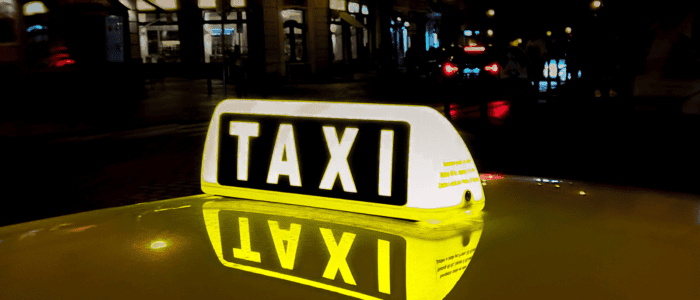Published
Lessons from Uber for the Taxi Industry
By: Jimmyn Parc
Subjects: Digital Economy European Union Services

Once again taxi drivers have blocked the streets in a major European city as part of a protest against the ride-sharing service Uber. The latest demonstration took place in Madrid mirroring similar actions in other cities including Copenhagen, London, and Paris. Much of the strong opposition to transportation network companies (TNCs) like Uber is centered on a number of controversial issues, specifically the crowding out of traditional taxis, concerns about employment conditions and wages, and the safety of passengers. Given this situation, why have traditional taxi services been struggling so much vis-a-vis TNCs in recent years? While it is possible to point to a number of different factors, adopting a business perspective can help provide an accurate explanation for the difficulties they face.
While survival of the fittest has always been the guiding principle in nature, it can also apply to countries, industries, companies, and even individuals. Yet coming up with a way to define what exactly characterizes the fittest is not so easy. Fortunately, when looking at industries and companies, this term is very much connected with competitiveness which has been carefully analyzed over the years by the business strategy guru Michael Porter. According to his work, firms can succeed relative to their competition in the long run provided they possess sustainable competitive advantage. There are two basic types of competitive advantage: lower cost (or cost leadership) and differentiation.[1]
Lower cost is the ability of a firm to design, produce, and market a comparable product or service of acceptable quality more efficiently than its competitors. At prices at or near those offered by competitors, lower cost translates into superior returns. On the other hand, differentiation is the ability to provide unique and superior value to the buyer in terms of product quality, special features, or after-sale service. Differentiation allows a firm to command a premium price, which leads to superior profitability. In the course of changes in the business environment, companies will apply various strategies to improve, maintain, and/or even alter their competitive advantage.
These two types of competitive advantage can explain the changing landscape of the taxi industry caused by the emergence of TNCs. When we compare the fares of TNCs and traditional taxis, the former are obviously more reasonable in this regard. This is because the basic concept behind TNCs are to use a large pool of available cars and drivers. Furthermore, by using mobile apps, TNCs are able to match consumers and drivers who are in close proximity to one another. The mobile service also displays to consumers the fastest and cheapest route to their destination in advance, so that they are fully aware before traveling of where they are going and how much it will cost. Even with extra luggage, consumers are not required to pay any extra fees. This highlights the ways in which TNCs have competitive advantage in respect of cost.
TNCs also offer a differentiated service to consumers when compared with traditional taxis. The cars employed are usually top-of-the-range models and the drivers make a special effort to be kind; some, depending on the country, even offer beverages and snacks. In the case of Uber, they offer cars that provide easy access for disabled passengers, electronic or hybrid cars, and even luxury cars. Therefore, it can be said that TNCs have competitive advantage in differentiation. Here it becomes more evident that the traditional taxi services do not possess any competitive advantage when compared with TNCs.
Rather than engaging in endless counterproductive demonstrations, traditional taxi drivers should seek to gain competitive advantage vis-à-vis TNCs. Prohibiting TNCs would hinder technological advancement and the development of other related industries that have great potential for improving many other industries. From the manufacturing industry to the music industry, technological advancement such as digitization has changed the whole business environment. While there still exists significant opposition to this, it has proven to be the winning card toward achieving competitive advantage in the long run.
[1] Michael Porter (1985). Competitive Advantage: Creating and Sustaining Superior Performance. The Free Press: New York, p.11.